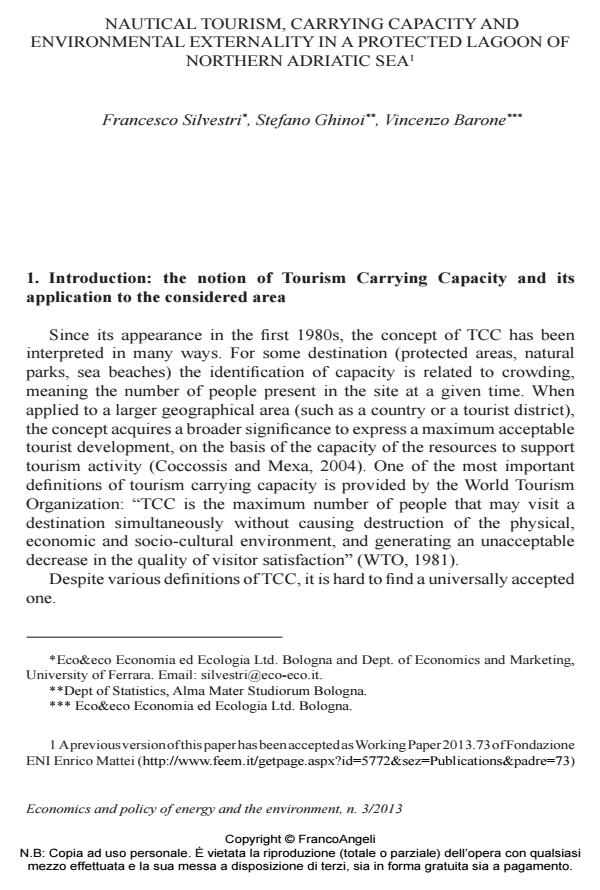Nautical tourism, carrying capac ity and environmental externality in a protected Lagoon of Northern Adriatic Sea
Titolo Rivista ECONOMICS AND POLICY OF ENERGY AND THE ENVIRONMENT
Autori/Curatori Francesco Silvestri, Stefano Ghinoi, Vincenzo Barone
Anno di pubblicazione 2014 Fascicolo 2013/3
Lingua Inglese Numero pagine 36 P. 145-180 Dimensione file 3081 KB
DOI 10.3280/EFE2013-003006
Il DOI è il codice a barre della proprietà intellettuale: per saperne di più
clicca qui
Qui sotto puoi vedere in anteprima la prima pagina di questo articolo.
Se questo articolo ti interessa, lo puoi acquistare (e scaricare in formato pdf) seguendo le facili indicazioni per acquistare il download credit. Acquista Download Credits per scaricare questo Articolo in formato PDF

FrancoAngeli è membro della Publishers International Linking Association, Inc (PILA)associazione indipendente e non profit per facilitare (attraverso i servizi tecnologici implementati da CrossRef.org) l’accesso degli studiosi ai contenuti digitali nelle pubblicazioni professionali e scientifiche
Tourism and environmental preservation are often conflicting activities, mainly in coastal lagoons, where seaside mass-tourism comes into contact with a very sensitive ecological system. In this paper we deal with a classical problem of both environmental and tourism economics, the internalization of environmental costs of tourism, focusing on the nautical fruition of the Lagoon of Marano and Grado (North-Eastern Italy, Friuli Venezia Giulia Region). Using different instruments, both theoretical (Carrying Capacity framework, Polluter-Payer principle, Coase compensation) and empirical (Log-log regression, Forecasting model, CBA with defensive expenditures and actual market values), we ascertained the result that - given the current nautical berths endowment - a standard Coase equilibrium (unit external cost equal to unit private benefit) does not hold, and a higher number of vessels transiting in the Lagoon is more effective than a tempered fruition for nature conservation. Another interesting result is that the best available solution to internalize environmental externality is a mixed one, combining a command and control rule (a speed-limit prescription) with a Coasian compensation scheme. All the technical theoretical and empirical derivations are reported in Appendix A (Pressure Parameter Calculation), Appendix B (Benefit and Cost Calculation), and Appendix C (Data set and Econometric Tests).
Parole chiave:Tourism Carrying Capacity, Nature conservation, Externalities, Empirical studies
Jel codes:Q01, Q26, Q57
Francesco Silvestri, Stefano Ghinoi, Vincenzo Barone, Nautical tourism, carrying capac ity and environmental externality in a protected Lagoon of Northern Adriatic Sea in "ECONOMICS AND POLICY OF ENERGY AND THE ENVIRONMENT" 3/2013, pp 145-180, DOI: 10.3280/EFE2013-003006